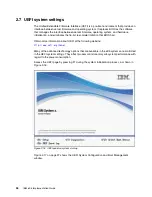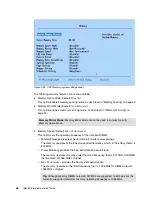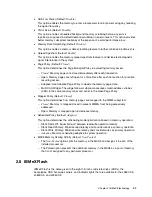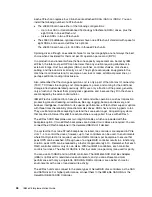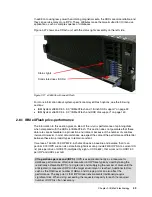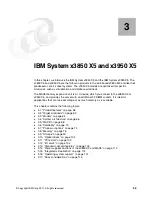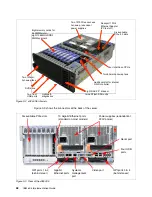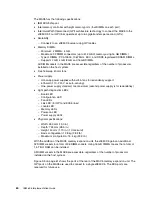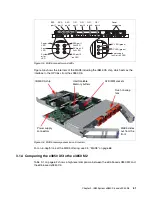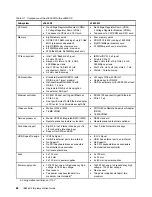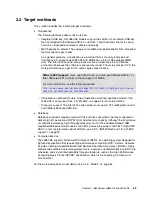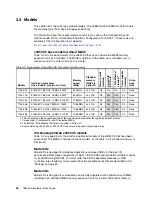
Chapter 2. IBM eX5 technology
49
In addition to using less power than rotating magnetic media, the SSDs are more reliable, and
they can service many more IOPS. These attributes make them well suited to I/O intensive
applications, such as complex queries of databases.
Figure 2-27 shows an eXFlash unit, with the status lights assembly on the left side.
Figure 2-27 x3850 X5 with one eXFlash
For more information about system-specific memory eXFlash options, see the following
sections:
IBM System x3850 X5: 3.9.3, “IBM eXFlash and 1.8-inch SSD support” on page 93
IBM System x3690 X5: 4.9.2, “IBM eXFlash and SSD disk support” on page 149.
2.8.1 IBM eXFlash price-performance
The information in this section gives an idea of the
relative
performance of spinning disks
when compared with the SSDs in IBM eXFlash. This section does not guarantee that these
data rates are achievable in a production environment because of the number of variables
involved. However, in most circumstances, we expect the scale of the performance differential
between these two product types to remain constant.
If we take a 146 GB, 15K RPM 2.5-inch disk drive as a baseline and assume that it can
perform 300 IOPS, we can also state that eight disks can provide 2400 IOPS. At a current US
list price per drive of USD579 (multiplied by eight = USD4,632), that works out to USD1.93
per IOP and USD4 per GB.
Status lights
Solid state drives (SSDs)
I/O operations per second (IOPS): IOPS is used predominantly as a measure for
database performance. Workloads measured in IOPS are typically sized by taking the
realistically achievable IOPS of a single disk and multiplying the number of disks until the
anticipated (or measured) IOPS in the target environment is reached. Additional factors,
such as the RAID level, number of HBAs, and storage ports can also affect the
performance. The key point is that IOPS-driven environments traditionally require
significant disk. When sizing, exceeding the requested capacity to reach the required
number of IOPS is often necessary.
Summary of Contents for x3850 X5
Page 2: ......
Page 20: ...xviii IBM eX5 Implementation Guide...
Page 32: ...12 IBM eX5 Implementation Guide...
Page 34: ...14 IBM eX5 Implementation Guide...
Page 74: ...54 IBM eX5 Implementation Guide...
Page 136: ...116 IBM eX5 Implementation Guide...
Page 238: ...218 IBM eX5 Implementation Guide...
Page 392: ...372 IBM eX5 Implementation Guide...
Page 466: ...446 IBM eX5 Implementation Guide...
Page 560: ...540 IBM eX5 Implementation Guide...
Page 564: ...544 IBM eX5 Implementation Guide...
Page 578: ...IBM eX5 Implementation Guide IBM eX5 Implementation Guide...
Page 579: ......


